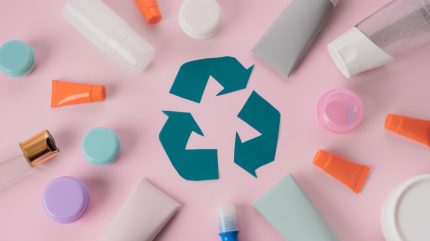
Once known for its lavish, single-use packaging and excessive plastic waste, the sector is now under pressure to embrace more sustainable practices. As consumers become more environmentally conscious, the demand for eco-friendly beauty products and packaging continues to grow.
But what does sustainable packaging really mean, and how are beauty brands adapting?

Discover B2B Marketing That Performs
Combine business intelligence and editorial excellence to reach engaged professionals across 36 leading media platforms.
At its core, sustainable packaging refers to materials and designs that minimise environmental impact. This includes everything from biodegradable containers and recycled plastics to refillable systems and reduced material usage.
With packaging accounting for a significant portion of a beauty product’s carbon footprint, sustainable alternatives are not just a trend — they are a necessity for long-term environmental stewardship and brand longevity.
The rise of conscious consumerism
A shift in consumer values has played a pivotal role in the industry’s transformation. Modern beauty buyers, particularly Millennials and Gen Z, are scrutinising more than just ingredient lists — they’re examining the lifecycle of the entire product.
Packaging that ends up in landfill is increasingly frowned upon, while brands that embrace minimalism, transparency, and circular economy principles are gaining loyalty.

US Tariffs are shifting - will you react or anticipate?
Don’t let policy changes catch you off guard. Stay proactive with real-time data and expert analysis.
By GlobalDataThis has led to a surge in demand for packaging that is recyclable, compostable, or reusable. Research by McKinsey & Company in 2023 highlighted that over 60% of global consumers consider sustainability an important factor when purchasing beauty products.
The message is clear: people want their beauty routines to be as kind to the planet as they are to their skin.
Social media has further accelerated this movement. Platforms like Instagram and TikTok have become arenas for eco-conscious beauty influencers to promote low-waste lifestyles and sustainable brands.
This peer-to-peer advocacy amplifies brand accountability and pushes sustainability from the margins to the mainstream.
Innovation and material revolution
To meet consumer expectations, beauty companies are investing heavily in research and development to explore alternative materials and innovative packaging designs. Glass, aluminium, and PCR (post-consumer recycled) plastics are seeing a revival, valued for their recyclability and premium feel.
Brands like REN Clean Skincare and L’Occitane have championed PCR plastic, successfully reducing virgin plastic use without compromising product integrity.
Biodegradable materials such as bamboo, cornstarch polymers, and mushroom packaging are also making their way into product design, particularly for secondary packaging like boxes and trays.
These materials break down naturally, offering an earth-friendly exit strategy once their usefulness ends.
Refillable packaging is another promising avenue. Beauty giants including Fenty Beauty, Dior, and Kjaer Weis are now offering products with refill pods or cartridges.
This model not only reduces waste but also fosters a deeper relationship between the consumer and the brand, encouraging repeat purchases in an environmentally responsible manner.
Smart design plays an essential role too. Minimalist packaging that reduces the amount of material used — such as eliminating excess plastic wrapping or omitting unnecessary applicators — is becoming more commonplace.
These design choices may seem minor, but they contribute significantly to reducing the environmental impact of a product over its lifecycle.
Challenges and the road ahead
Despite impressive strides, sustainable packaging in beauty still faces notable challenges. Recycling infrastructure varies widely across countries and regions, meaning what is recyclable in one location may be destined for landfill in another.
This inconsistency complicates efforts by brands to adopt truly global sustainability solutions.
There is also the issue of greenwashing — when companies exaggerate or misrepresent the environmental benefits of their products. With sustainability becoming a buzzword, not all claims are made in good faith.
Transparency, backed by third-party certifications and life cycle assessments, is critical for maintaining consumer trust.
Cost is another hurdle. Sustainable materials and innovative packaging often come at a higher price, and not all brands are willing or able to absorb the extra expense.
However, as demand grows and technology improves, the cost of eco-friendly solutions is expected to decrease, making them more accessible for both brands and consumers.
Looking ahead, the most effective approach may lie in collaboration. Industry-wide partnerships, such as the Sustainable Packaging Coalition and TerraCycle’s Loop initiative, are helping to standardise practices and scale up solutions.
These efforts, combined with growing pressure from both consumers and regulators, suggest a promising future for sustainable packaging.
Final thoughts
Sustainable packaging is no longer a niche concept — it’s an essential pillar of the modern beauty industry.
As innovation accelerates and consumer expectations evolve, the brands that succeed will be those that integrate environmental responsibility into every layer of their operations.
Whether through materials, design, or business models, the move towards sustainable packaging reflects not just a change in production, but a shift in values.
And in an industry defined by transformation and renewal, this evolution feels not just appropriate, but inevitable.



